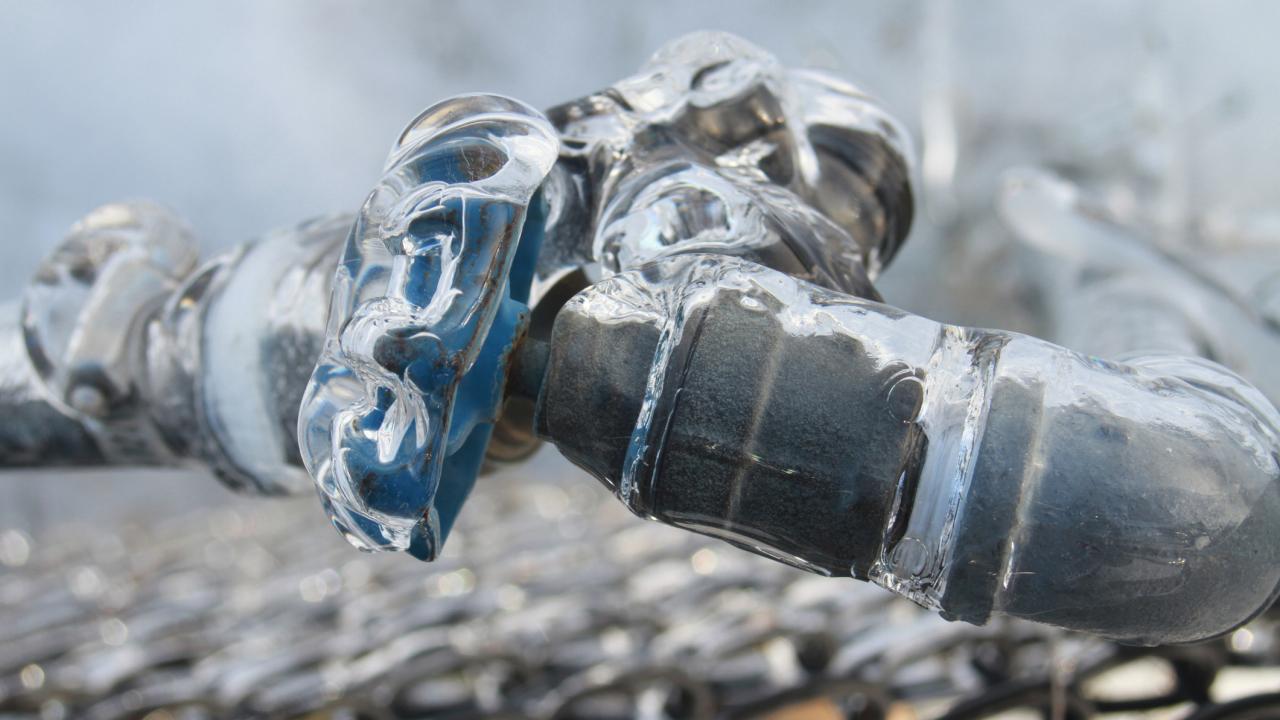Critical Strategies for Preventing Frozen Plumbing in Cold Weather
Critical Strategies for Preventing Frozen Plumbing in Cold Weather
Blog Article
The article down below involving Winter Plumbing Precautions: Preventing Frozen Pipes is immensely entertaining. Don't miss out on it.

Winter can damage your pipes, particularly by freezing pipes. Below's exactly how to stop it from taking place and what to do if it does.
Intro
As temperature levels drop, the risk of frozen pipelines increases, possibly resulting in expensive repair work and water damage. Recognizing how to stop icy pipelines is essential for house owners in chilly environments.
Avoidance Tips
Shielding at risk pipelines
Cover pipes in insulation sleeves or utilize heat tape to protect them from freezing temperature levels. Concentrate on pipes in unheated or exterior locations of the home.
Home heating strategies
Keep interior spaces adequately warmed, particularly areas with pipes. Open cabinet doors to permit warm air to circulate around pipelines under sinks.
How to recognize icy pipes
Try to find decreased water circulation from faucets, uncommon odors or sounds from pipes, and noticeable frost on exposed pipelines.
Long-Term Solutions
Structural modifications
Consider rerouting pipes far from exterior walls or unheated areas. Include added insulation to attics, cellars, and crawl spaces.
Updating insulation
Invest in high-quality insulation for pipes, attics, and walls. Correct insulation aids maintain consistent temperature levels and decreases the threat of frozen pipes.
Protecting Outdoor Pipes
Yard hoses and exterior taps
Detach and drain yard pipes before winter season. Install frost-proof faucets or cover outdoor taps with protected caps.
Recognizing Frozen Pipes
What triggers pipelines to freeze?
Pipes ice up when revealed to temperatures below 32 ° F (0 ° C) for prolonged durations. As water inside the pipelines freezes, it expands, putting pressure on the pipeline wall surfaces and possibly causing them to burst.
Risks and problems
Frozen pipes can result in water system disturbances, home damage, and costly repair services. Burst pipes can flood homes and trigger substantial structural damage.
Signs of Frozen Pipes
Recognizing icy pipes early can prevent them from breaking.
What to Do If Your Pipelines Freeze
Immediate actions to take
If you presume frozen pipelines, keep faucets open up to ease pressure as the ice thaws. Use a hairdryer or towels taken in hot water to thaw pipelines gradually.
Final thought
Stopping frozen pipes calls for positive measures and fast reactions. By understanding the causes, signs, and safety nets, property owners can shield their plumbing throughout cold weather.
6 Proven Ways to Prevent Frozen Pipes and Protect Your Home
Disconnect and Drain Garden Hoses
Before winter arrives, start by disconnecting your garden hoses and draining any remaining water. Close the shut-off valves that supply outdoor hose bibs and leave the outdoor faucet open to allow any residual water to drain. For extra protection, consider using faucet covers throughout the colder months. It’s also important to drain water from any sprinkler supply lines following the manufacturer’s directions.
Insulate Exposed Pipes
Insulating your pipes is an effective way to prevent freezing. Pipe insulation is readily available at home improvement stores and is relatively inexpensive. Pay close attention to pipes in unheated areas such as the attic, basement, crawl spaces, or garage. Apply foam insulation generously to create a buffer against the cold. You can also wrap your pipes in heat tape or thermostat-controlled heat cables for added warmth.
Seal Air Leaks
Inspect your home for any cracks or openings that could let in cold air. Seal any holes around the piping in interior or exterior walls, as well as the sill plates where your home rests on its foundation. Additionally, make sure to keep your garage door closed unless you’re entering or exiting. Leaving it open creates a significant air leak that can lead to frozen pipes.
Allow Warm Air Circulation
During cold snaps, it’s essential to allow warm air to circulate evenly throughout your home. Leave interior doors ajar to promote better airflow. Open kitchen and bathroom cabinets to help distribute heat consistently around the rooms. If you have small children or pets, be sure to remove any household chemicals or potentially harmful cleaners from open cabinets for safety.
Let Faucets Drip
A small trickle of water can make a big difference in preventing ice formation inside your pipes. When temperatures drop significantly, start a drip of water from all faucets served by exposed pipes. This continuous flow helps prevent the water from freezing. Additionally, running a few faucets slightly can relieve pressure inside the pipes, reducing the chances of a rupture if the water inside does freeze.
https://choateshvac.com/6-proven-ways-to-prevent-frozen-pipes-and-protect-your-home/

We hope you enjoyed our excerpt on How to Prevent Your Pipes From Freezing. Thanks a lot for taking the time to read our article. Enjoyed reading our piece? Please share it. Help somebody else discover it. Thank you so much for taking the time to read it.
Quote & Schedule Report this page